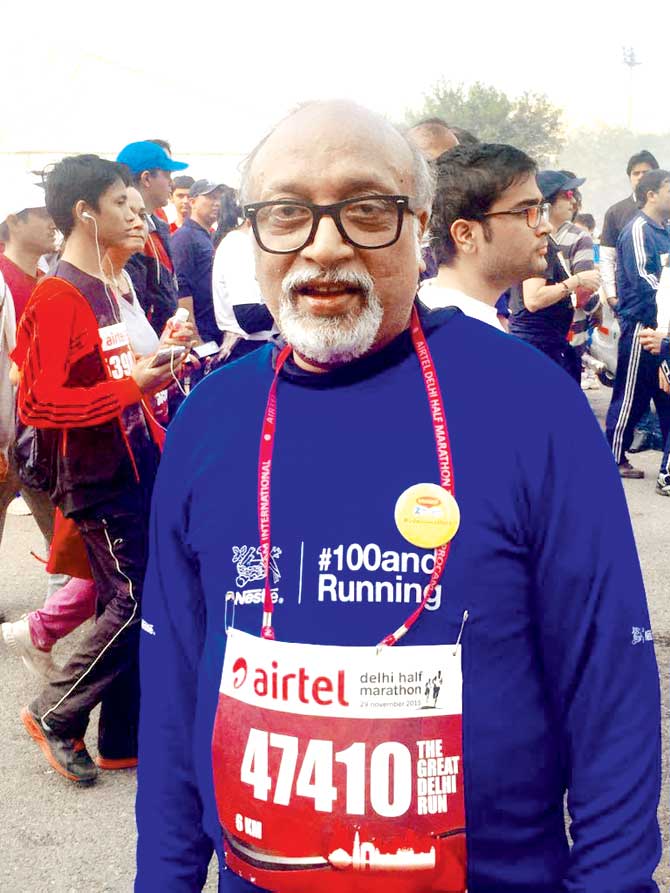While our attention span hasn’t dropped to goldfish standard, a recently introduced feature on WhatsApp is another reminder that our capacity to concentrate has hit rock bottom

 We are subjected to an excessive bombardment of information. Imaging/Ravi Jadhav
We are subjected to an excessive bombardment of information. Imaging/Ravi Jadhav
ADVERTISEMENT
Earlier last week, WhatsApp launched a new feature that lets users send status messages as a photograph or video, which gets deleted after 24 hours. Soon, you can expect an hourly uploadable-deletable ‘status’ in keeping with diminishing attention spans. Psychiatrist Anjali Chhabria and clinical psychologist Sonali Gupta believe reduced attention spans are a reality built over the past decade. The cause is addiction to gadgets with one thing in common: screens. The light emitted from any screen causes an addiction, while also distracting users. Contradictory? Not really.
 Anjali Chhabria
Anjali Chhabria
The art of distraction
Diminished attention spans are mostly seen between the ages of two and 45. Mayuri Gopalkrishnan, executive director of a Mumbai-based learning academy, clarifies that children typically have low attention spans, but it is more so now because of novel teaching methods that involve puppets and pictures. She agrees that access to screens have influenced them as well. "I tell new teachers that they’re competing with an animated feature on a smartphone or tablet," she says.
While toddlers and young children may not have free access to screens, teenagers and adults do, and it shows. Chhabria recalls an experiment she conducted during a workshop for 17 to 18-year-old students. They were given a break and observed during that time. "Each student checked his/her phone nearly every 30 seconds to one minute, even if not beeping."
 Sonali Gupta
Sonali Gupta
Gupta feels there is also an excessive bombardment of information to the cognitive senses, reducing our focus. Earlier, reading was limited to a physical book or newspaper. "These days, if you read one article on any device, several links pop up; that distracts you," she adds. She sees an average of 10 clients a month who say they can’t concentrate, or haven’t read a book in years. "In addition to apps that provide instant news, there are also apps that offer summaries for books," says Gupta. So, we hoard information, but can’t claim to have knowledge.
 KV Sridhar
KV Sridhar
Width vs depth
Ad guru KV Sridhar calls this the depth of engagement, which he feels has reduced drastically. "A 10-minute video can claim to have a million views, but delve into it and you’ll realise that nearly 50 to 60 per cent viewers switched to something else within the first 15 seconds, and not even five per cent watched it to the end," he explains. Sridhar feels that while social media has increased the width of our information, the depth of our knowledge has fallen. Since screens provide gratification with a mere click or swipe, one has become a lot more impatient, distracted. We’d rather skim through several topics than read about one.
One could argue that knowing a little about everything isn’t so bad, but Gupta feels most of the information we access these days is ultimately useless. Thus our capacity for activity, productivity and efficiency reduces a great deal. "We need to read the same thing several times to understand it. And the most innovative ideas emerge from boredom, which doesn’t exist any more," she says. Lesser attention spans also lead to impatience, sleep deprivation and anger spurts.
Gupta says that maybe we’ve gone down a rabbit hole; she is unsure what may pop up on the other side. Sridhar says advertisers and content creators are tapping controlled environments like a plane or train journey, by creating finite content that can be watched without external distractions. For instance, content that lasts exactly as long as the Churchgate-Virar commute.
 Subscribe today by clicking the link and stay updated with the latest news!" Click here!
Subscribe today by clicking the link and stay updated with the latest news!" Click here!






